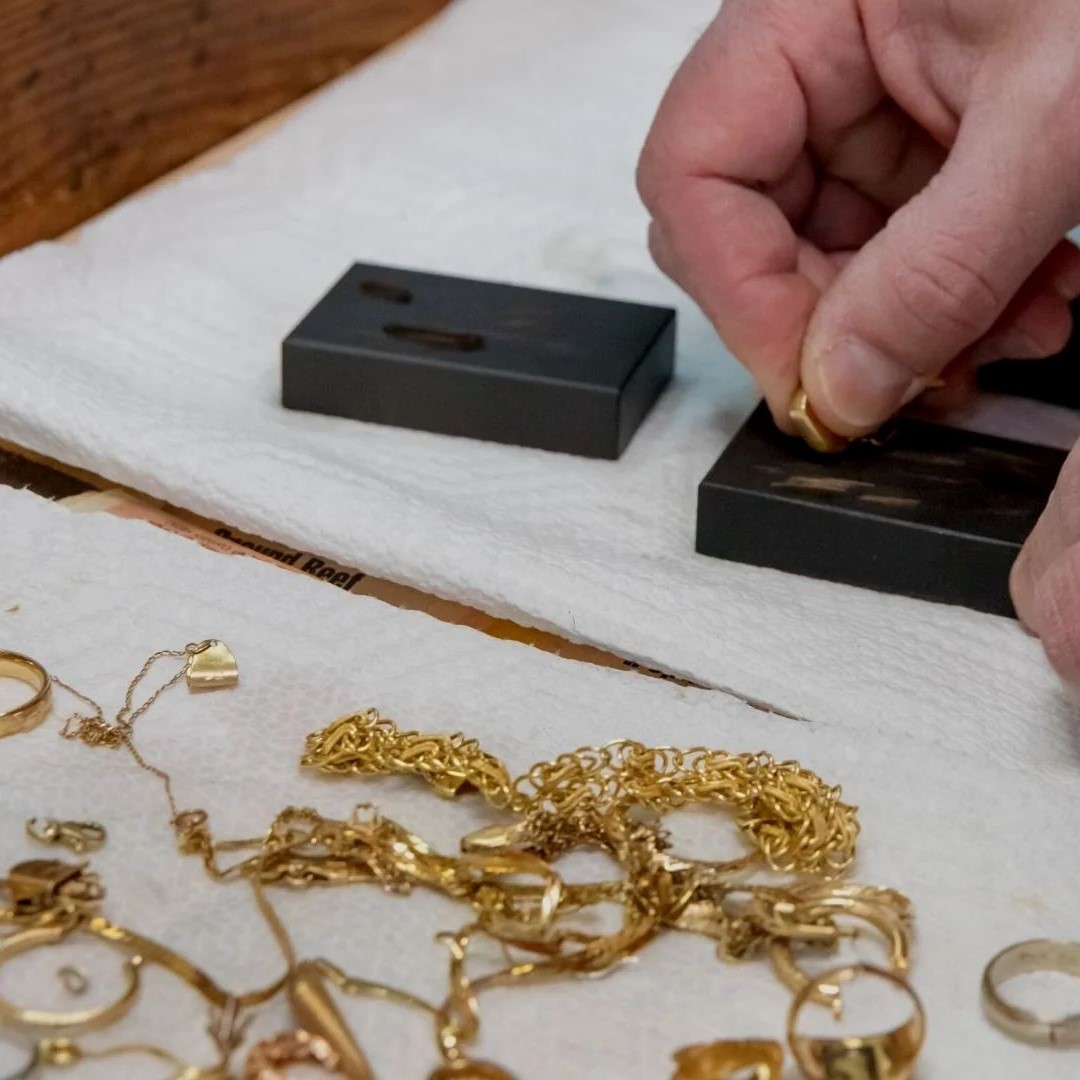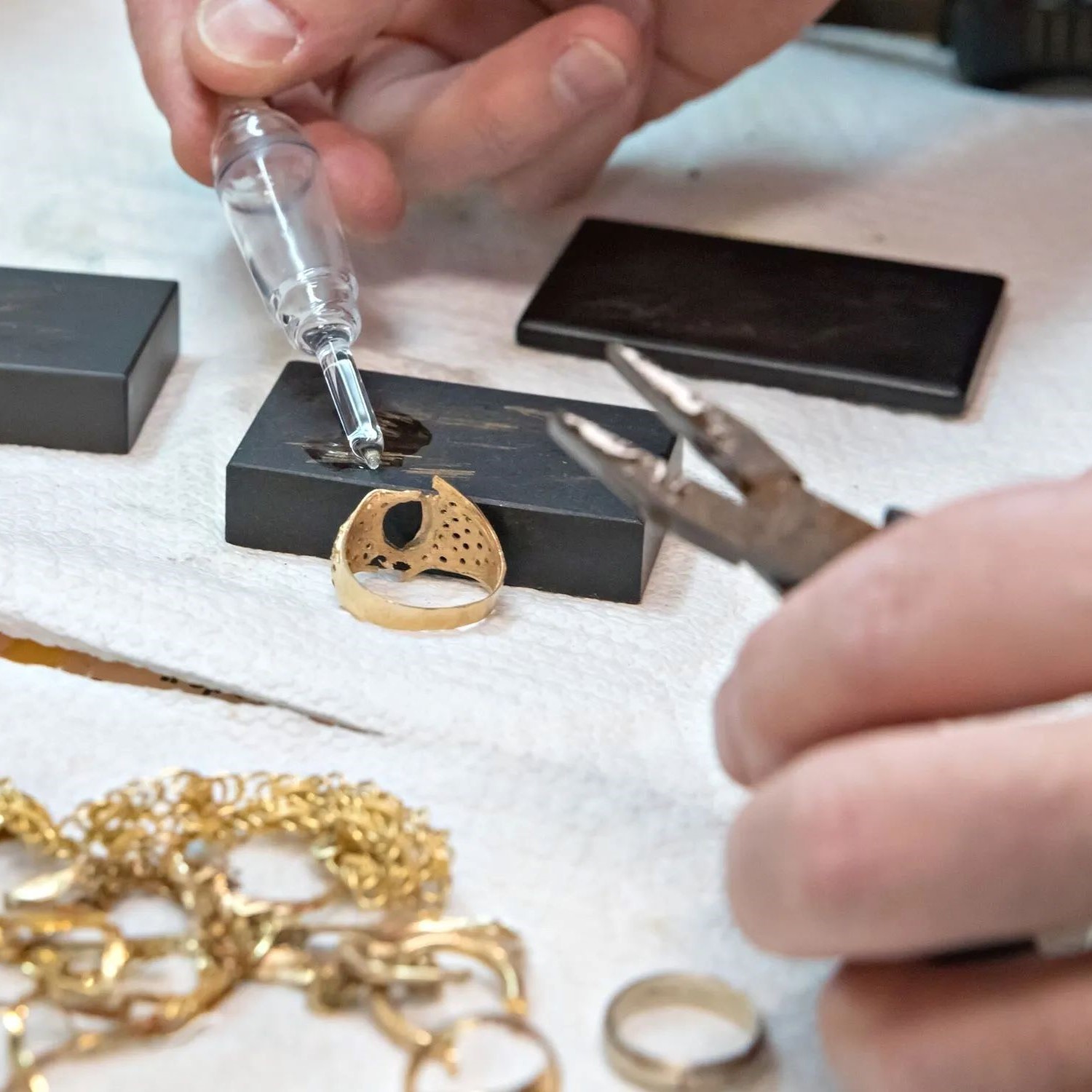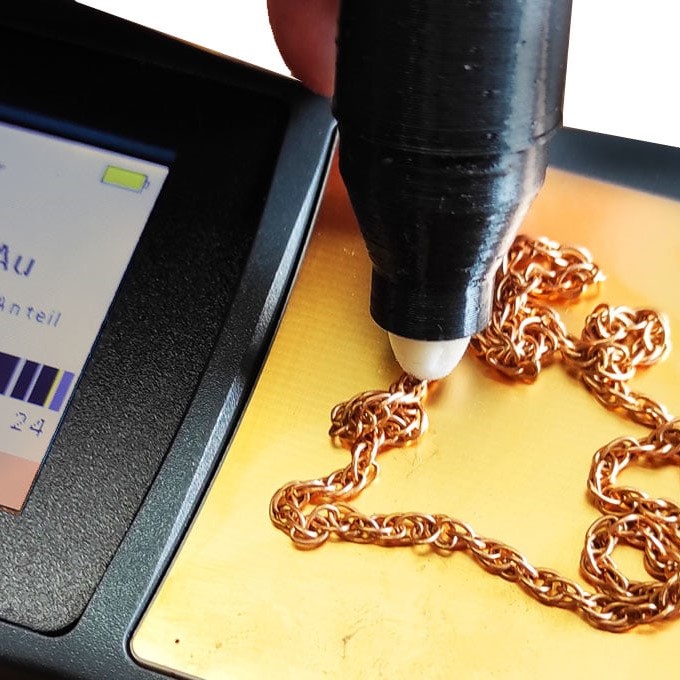Knowing how to test gold jewelry is essential for anyone who owns, buys, or sells precious items. Whether you inherited a necklace or purchased a ring online, verifying its authenticity protects your investment. Fake or misrepresented gold is common in the market. As a result, learning reliable testing methods helps avoid costly mistakes.
Moreover, gold value depends on purity, measured in karats. Without accurate verification, you might undervalue or overpay for an item. Fortunately, several practical techniques exist to confirm whether your jewelry is real gold. Some require professional tools, while others can be done at home with simple supplies.
Additionally, understanding these methods gives you confidence during transactions. You can negotiate fairly when buying or selling. At the same time, you preserve sentimental pieces by ensuring they are properly cared for.
This guide explores multiple ways to test gold jewelry safely and accurately. From visual inspections to chemical tests, each method has pros and cons. By combining several approaches, you increase accuracy and reduce risk.
Ultimately, taking the time to learn how to test gold jewelry empowers you as a consumer. It transforms uncertainty into knowledge. With the right information, you make smarter decisions about your valuables.
 Visual Inspection: The First Step in Testing
Visual Inspection: The First Step in Testing
Start by examining the piece closely with a magnifying glass. Genuine gold jewelry often has hallmarks stamped on the inside of bands or clasps. These marks indicate purity, such as 10K, 14K, 18K, or 24K.
If no stamp is visible, that doesn’t mean it’s fake. Older or handmade pieces may lack markings. However, missing stamps should raise caution, especially with high-value items.
Look for signs of discoloration or flaking. Real gold does not tarnish or turn green on the skin. If you notice green residue, the item likely contains base metals.
Also, check the weight. Gold is dense and feels heavier than most other metals. A lightweight piece may be hollow or plated.
Examine the craftsmanship. Authentic gold jewelry usually shows fine details and smooth finishes. Poorly made edges or rough surfaces suggest lower quality.
Furthermore, observe how light reflects off the surface. Pure gold has a rich, warm glow. Imitations often appear too yellow, dull, or overly bright.
Finally, compare the item to known authentic pieces. Differences in color or texture can reveal inconsistencies. While not foolproof, visual checks are a fast way to begin the process of how to test gold jewelry.
Magnet Test: A Quick and Easy Method
Use a strong magnet to perform a basic screening. Hold the magnet close to the jewelry. Real gold is non-magnetic and will not attract.
If the piece sticks or pulls toward the magnet, it contains ferrous metals like iron or steel. Therefore, it is not solid gold.
However, some alloys used in white gold may show slight magnetic responses. This doesn’t always mean the item is fake. Still, a strong pull indicates plating or counterfeit material.
This test works best for quick assessments. It’s safe, requires no chemicals, and takes seconds. As a result, many jewelers use it as a first filter.
Keep in mind that non-magnetic results don’t guarantee authenticity. Other non-magnetic metals like brass or copper can mimic gold. Thus, this method should be combined with others.
For example, pair the magnet test with a visual inspection. Together, they eliminate obvious fakes early.
Always use a neodymium magnet for best results. Regular fridge magnets may not be strong enough to detect weak attractions.
Despite its simplicity, the magnet test remains one of the most accessible ways to start learning how to test gold jewelry. It prevents wasted time on clearly fake items.
 Skin Test: Observing Reactions Over Time
Skin Test: Observing Reactions Over Time
Wear the jewelry for a full day and monitor your skin. Genuine gold does not react with sweat or body chemistry. Therefore, no discoloration should occur.
If the skin underneath turns green, black, or red, the piece likely contains copper, nickel, or other reactive metals. These elements oxidize when exposed to moisture.
While this isn’t harmful for most people, it signals that the item is not pure gold. Gold-plated or alloyed jewelry often causes this reaction.
Note that even 14K and 18K gold contain other metals. However, reputable alloys minimize irritants. Hypoallergenic options use palladium or silver instead of nickel.
The skin test is passive but effective over time. It reveals long-term behavior rather than instant results.
Combine this method with others for better accuracy. For instance, if the magnet test passes but the skin changes color, further investigation is needed.
Avoid relying solely on this test for valuation. It only indicates metal content indirectly. Yet, it provides useful clues, especially for everyday wearers.
As part of a broader strategy, the skin test adds another layer to how to test gold jewelry correctly.
Acid Test: A Reliable Way to Check Purity
The acid test is one of the most accurate methods to verify gold content. Purchase a gold testing kit that includes nitric acid and aqua regia solutions.
First, rub the jewelry on a testing stone to leave a streak. Then apply a drop of acid to the mark. Observe the reaction carefully.
If the streak dissolves or changes color, the metal is not gold. A stable mark indicates real gold. Different acid strengths correspond to various karats.
For example, 14K acid will dissolve marks below 14-karat purity. Matching the correct acid to the suspected karat improves accuracy.
Always work in a well-ventilated area. Wear gloves and eye protection. Acids are corrosive and can cause injury if mishandled.
This method works on rings, chains, and pendants. However, it may scratch soft gold. Test in inconspicuous areas when possible.
Results are nearly immediate. The color change—or lack thereof—gives clear feedback.
Professional jewelers use this technique daily. Its reliability makes it a cornerstone of how to test gold jewelry effectively.
 Electronic Gold Tester: Fast and Non-Destructive
Electronic Gold Tester: Fast and Non-Destructive
An electronic gold tester offers a modern, safe alternative. Simply place the probe tips on the jewelry surface. The device measures electrical conductivity.
Gold conducts electricity differently than other metals. The tester compares readings to known standards. Then it displays the karat value digitally.
These devices are highly accurate when calibrated correctly. They work on all types of gold, including white and rose varieties.
Best of all, they do not damage the jewelry. There’s no scratching or chemical use. This makes them ideal for valuable or delicate pieces.
However, surface dirt or plating can affect results. Clean the item thoroughly before testing. Wipe with alcohol and dry completely.
Some models include settings for different metals. This prevents false readings from silver or platinum components nearby.
While more expensive than acid kits, electronic testers save time and reduce risk. Many come with warranties and user guides.
Because of their ease and precision, they are widely recommended. Using one strengthens your ability to learn how to test gold jewelry confidently.
Float Test: Using Water to Assess Density
Drop the jewelry into a glass of water. Real gold is dense and will sink immediately. Lightweight imitations may float or hover.
This test relies on physics. Gold has a specific gravity of about 19.3 g/cm³. Most fake materials are much lighter.
Plastic, glass, or aluminum-based fakes often fail this test instantly. Even some metal alloys lack sufficient density.
However, tungsten has similar weight to gold. It can pass the float test but still be fake. Therefore, combine this method with others.
Make sure the piece is clean and dry before testing. Water trapped in crevices can alter buoyancy.
Avoid using this test on porous stones or damaged settings. Water may seep in and cause damage.
Though simple, the float test quickly eliminates many counterfeits. It requires no special tools and takes less than a minute.
When added to your toolkit, it becomes another useful step in how to test gold jewelry accurately.
 Professional Appraisal: When to Seek Expert Help
Professional Appraisal: When to Seek Expert Help
Sometimes, home tests aren’t enough. If the jewelry is valuable, antique, or complex, consult a certified appraiser.
Professionals use advanced tools like X-ray fluorescence (XRF) analyzers. These scan the metal without damage. Results show exact composition.
Appraisers also assess craftsmanship, age, and market value. Their reports help with insurance, resale, or estate planning.
Visit a reputable jeweler or gemological lab. Avoid stores that offer “free” evaluations but pressure you to sell.
Bring any documentation, boxes, or receipts. These support provenance and increase trust in the assessment.
Expect to pay a fee for thorough appraisal services. However, the cost is small compared to potential losses from misidentification.
A written report provides legal protection. It verifies authenticity and protects against fraud.
Ultimately, expert evaluation completes the full picture of how to test gold jewelry responsibly.
Frequently Asked Questions
Can vinegar be used to test gold jewelry?
Yes, but it’s unreliable. Vinegar may cause slight reactions in low-karat gold, but results are inconsistent. Better methods exist.
Does real gold always have a stamp?
Not always. Handmade, vintage, or imported pieces may lack marks. Lack of stamp doesn’t prove it’s fake.
Can gold-plated items pass some tests?
Yes. Plated items may pass magnet and float tests. However, acid or electronic testers usually detect thin layers.
Is the scratch test safe for my jewelry?
It can leave marks. Always test in hidden spots. Consider non-destructive options first.
How accurate are smartphone gold testing apps?
Most are gimmicks. They cannot measure metal composition. Do not rely on them for serious evaluations.
What should I do if my gold jewelry fails a test?
Stop wearing it. Store it safely. Get a second opinion from a professional before making decisions.
Can I test gold coins the same way as jewelry?
Yes. Most methods apply equally. However, numismatic value may require specialized grading.
Are home testing kits worth buying?
For occasional use, yes. Kits with acid and stones offer good value. For frequent testing, invest in an electronic tester.
 Final Thoughts on Mastering How to Test Gold Jewelry
Final Thoughts on Mastering How to Test Gold Jewelry
Testing gold jewelry doesn’t have to be complicated. With the right knowledge, anyone can verify authenticity at home. Start with simple checks like magnets and float tests. Then move to more precise methods like acid or electronic testing.
Combining several techniques increases accuracy. No single test is perfect. Yet, together they form a strong defense against fraud.
For high-value or sentimental pieces, professional help is wise. Experts provide definitive answers and detailed reports.
Learning how to test gold jewelry protects your finances and emotional investments. It turns doubt into certainty.
Whether you’re a collector, seller, or heir, these skills are invaluable. Stay informed, stay cautious, and always verify.
In the end, mastering how to test gold jewelry ensures your treasures remain genuine and trusted for years to come.
